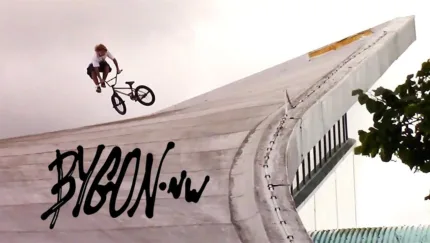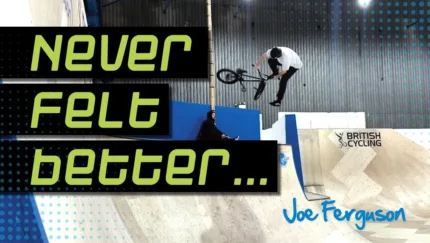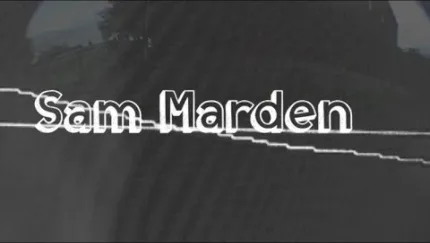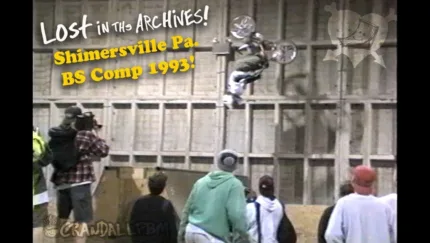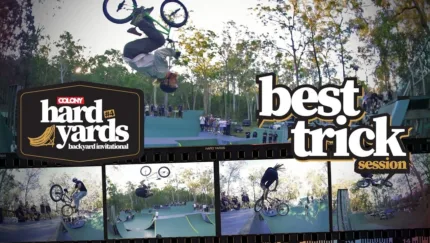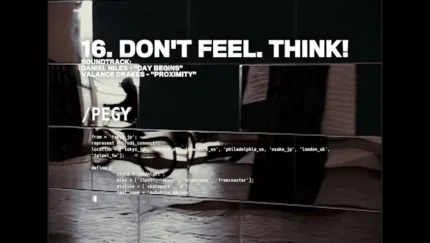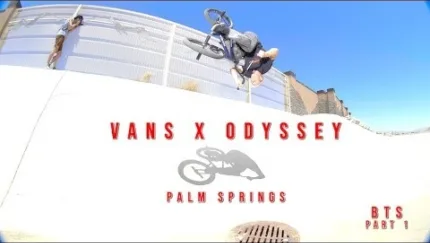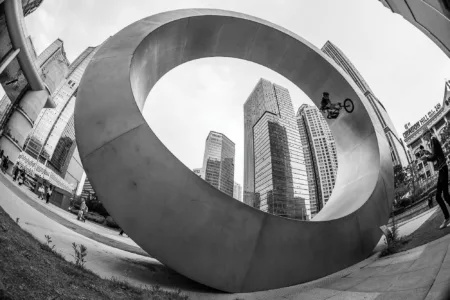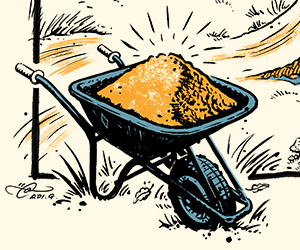
Ricky Adam - Life After Print
"There’s no hiding with photography. A good photo will cut through the crap."
Intro by Paul Robinson | Questions by Will Smyth | Originally published in DIG Magazine Issue 99.8 - 2017
— Survival is a primal instinct that’s rooted in every human being and at some point every person has to select an option that will least upset the course of his or her life. Decisions will need to be made, hard decisions that compromise creativity and passion eventually and possibly steering you away from your goal. Social media didn’t just happen overnight, it grew into what it is today and combined with the rate of hi-tech developments it formed a giant destructive monster that would rip open the stable landscape of BMX media and leave a strange and unfamiliar one in its wake.
— During this transition many BMX photographers realised they couldn’t earn a living doing what they did before. Magazines were not being printed because kids didn’t read or buy them due to information being already available on the web, and brands didn’t need to pay photographers for photos anymore. I don’t think anyone was fully aware at the time what was happening as social media was growing and video was becoming more and more exciting to the younger generation. Once legitimate media was being bypassed and it seemed like almost everyone was way too distracted by what was going on inside his or her phones to really care.
— Survival kicked in for the best BMX photographers at this point and sent them off in many different directions with a lot to think about. For DIG Magazine Issue 99.8 we spoke with with seven of the world’s most influential BMX magazine photographers of the past decade (and beyond), to find out just how those survival instincts affected them since the demise of their respective print titles, including our own, and how they manage to keep shooting. I think it was Barack Obama who said, “If you run you stand a chance of losing, but if you don’t run you’ve already lost.” - PR
— Next up is long time close friend and DIG family member Ricky Adam (older brother of our XGames gold filmer Peter Adam - for those who don't know). Ricky was possibly our single biggest photographic influence in making DIG differentiate from every other BMX magazine, with his eye for personality combined with the rawness and realities of the BMX lifestyle that the vast majority of riders could relate to. For us this style led the way alongside his incredible Spike Jonze/Windy Osborn inspired riding shots. A lot has changed since our last bi-monthly print issue so read on to find out what he's up to these days.


Ricky (right) passing on the knowledge in his current day job. Leeds, UK. Novemeber 2017. Photo: Joey Spinoza
How has your day-to-day-work changed since you stopped shooting for DIG magazine back in 2014?
In some ways it has changed a lot, but on the other hand I’m still doing a lot of the same things that I’ve been doing for years. I’m working with photography and print every day creating things, and I’m also working with talented young people - a few of which are BMXers. I can’t seem to escape them!
When I first started working at the University, it was strange being in a building, as opposed to being out and about, lurking around at the bottom of a handrail. But I adapted pretty quick. I’ve also adapted to having 5 cups of coffee a day. There are no bi-monthly print deadlines these days. In a weird way I kind of miss that. I don’t, however, miss all of the BMX industry-related nonsense. I never thought I’d say this, but it’s nice having a routine.
Was there a point when you noticed that BMX photography and print was becoming less relevant to the riders?
I could see the gradual decline in print over the years. Mainly due to a younger generation of rider weaned on the internet. Video parts became the dominant force, which meant the stills photographer took a bit of a back seat. Some teams stopped asking photographers to go on trips together. Companies weren’t running as many print ads, because they were expensive, and companies could effectively advertise for free on their own website.
Sometimes a rider wouldn’t want to shoot a photo without a video person present, which was fine. I wasn’t offended by this, it’s just the way things became and still are to a large degree. For a rider, a video clip on the internet can be viewed by a lot more people than a still photo in a magazine. At one time magazines were the dominant force. You can’t stop change.
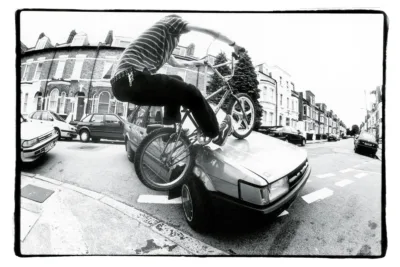
Ricky Adam. Rock n' roll - Stockwell, London. Circa 2003. Photo by Paul Bliss.
Tell us more about your current job.
I work at an arts University in Leeds (UK). I’ve been here for 3 years and I run the photography dept. It’s a really great gig. It’s a very social and friendly environment. I work alongside and help out creative students with lots of varying photo related projects. The graphic arts students make lots of books and printed matter which I’m well versed in, whilst the fine art and fashion students do a lot of photo studio related work. We also have photographic dark rooms which get used daily and I’ve got an amazing photo book library in my office. I run the area with an open door policy and encourage people to drop by to look at books and have a chat about their work.
The University has also been very supportive in other photo projects I’ve been working on. I also still do the odd commercial job.
Do you miss print and shooting BMX?
My years spent working at DIG provided me with an amazing time and great opportunities. I got to see a chunk of the world and got to hang out and work alongside some incredible people. It was a hobby turned dream job. But I’m older now and I don’t particularly want to be in the back of a van on a two-week road trip sleeping on floors or outdoors at skateparks.
Part of me does miss shooting BMX. It was a big part of my life for such a long time and I miss seeing photos in print every other month as well as the camaraderie of working at the mag.
Since I stopped working at DIG, I have been working on more photo projects than ever before. Not BMX related, but other long-term photo projects. I like the life I have now. I’m not really around BMX much these days, but it’ll always be in my blood. I still have my bike with the orange mag wheel and I’ll shoot photos of BMX again at some point.
'EDGE OF LIVING' Photo Project - Leeds, UK: 2008-2013
of 12
With less and less people 'working' as BMX photographers these days, do you think it will have any imapct on BMX photography as a craft?
In terms of camera equipment, BMX photography is technically a lot easier to shoot these days. Better cameras with faster sync speeds, smaller more powerful portable flashes, etc.
It’s a very democratic medium. These days everyone’s a photographer. Someone said there are more photographs in the world than there are bricks. But, there’s no hiding with photography. A good photo will cut through the crap. Regardless of the way the media has changed and the BMX industry has changed, it all boils down to the person holding the camera and taking the photo at the right place at the right time.

A classic Ricky Adam photo from DIG 86, Jan 2011. Ben Lewis cutting through some classic northern UK grit. The more things change, the more they stay the same.
"Editing is a crucial aspect to photography. To record anything properly, you need a good editor and curator at the helm. The internet is this huge unedited universe. This is why print is still hugely relevant..."
- Ricky Adam
In turn do you think there’ll be any detrimental effect in recording the history of BMX?
These days everything is intensely photographed, to the point where a lot of it is quite boring and cliched. Editing is a crucial aspect to photography. To record anything properly, you need a good editor and curator at the helm. The internet is this huge unedited universe. This is why print is still hugely relevant for the editing process.
Personally I like to have a carefully edited quality controlled document that I can pull off a shelf and look at.
What advice would you give to any young up and coming BMX photographer?
Photography is a fantastic medium, but you have to find a subject matter that is suitable for you as a person. I really believe you have to be a rider in order to be a BMX photographer. You need to have that sense of what it feels like to ride BMX and then try and translate that photographically.
Be persistent, obsessive. Try to develop your own style, your own voice so to speak. Above all, enjoy it.
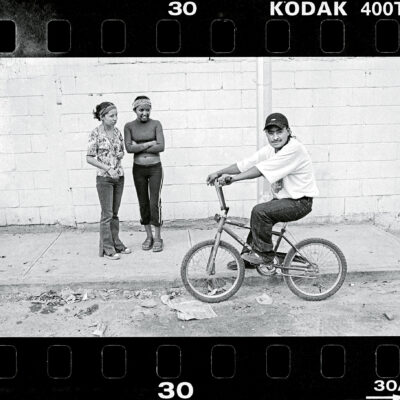
Mexico, circa 2005.
How many of your own print projects have you had published to date?
‘Destroying Everything’ was the first book I had published. That came out in 2013. It has a bunch of BMX and punk photos in it.
My latest book is ‘Belfast Punk 1997 - 2013.’ It came out in March 2017 on Damiani (a really great arts publisher). The photos are from a youth and community centre in the centre of Belfast called ‘The Warzone Centre’, which was an all ages venue which opened in 1986. It was run by punks and somehow bulldozed it’s way through a large period of the troubles with a collective ‘fuck you’ to anything that resembled violence or the so called ‘religious war’. It was a free-thinking space that challenged convention and offered people a chance to create and present their own ideas, voice opinions and make real change that went far beyond the confines of the centre. Over the years it became infamous as being one of the most credible venues in Europe for D.I.Y. punk.
Nobody else was really taking photos at the time - it was before digital cameras became popular, so the photos I took formed a record of the time and place.
There are a few other projects in the pipeline. Photo book making is a slow process, but a very rewarding one. Hopefully they’ll come to fruition over the next few years. With any luck the much talked about ‘DIG’ book will happen at some point soon!

"These days everything is intensely photographed, to the point where a lot of it is quite boring and cliched."- Ricky Adam

Previous
Fred Murray - Life After Print
"A Vlog will never be iconic."
Next
KINK 'Sweating Kansas' Photo Journal
Feeling the heat in Middle America
Related Content


























